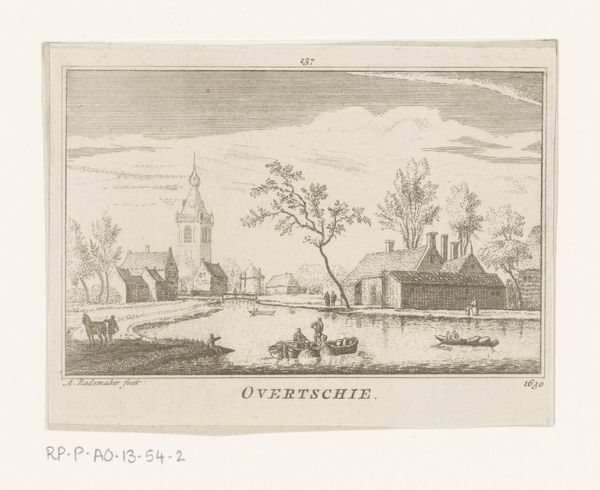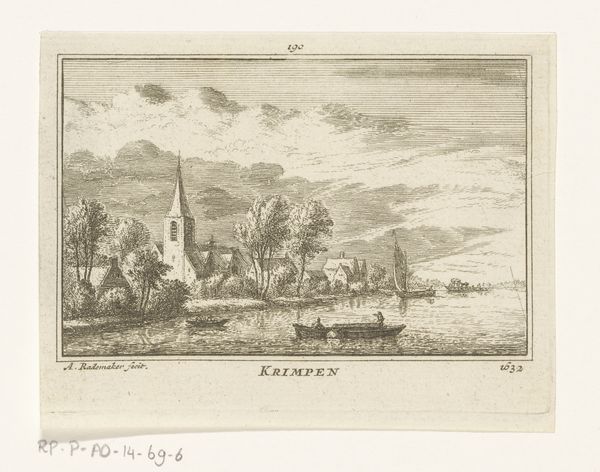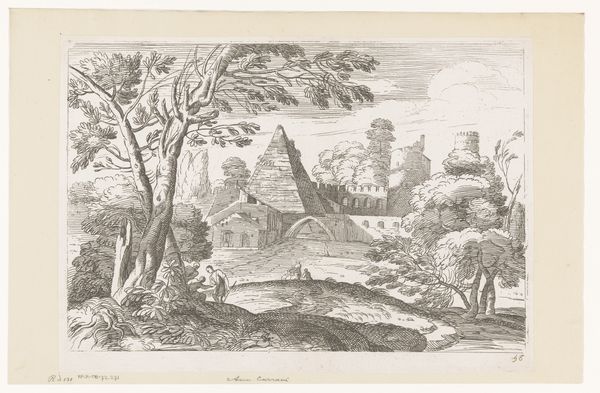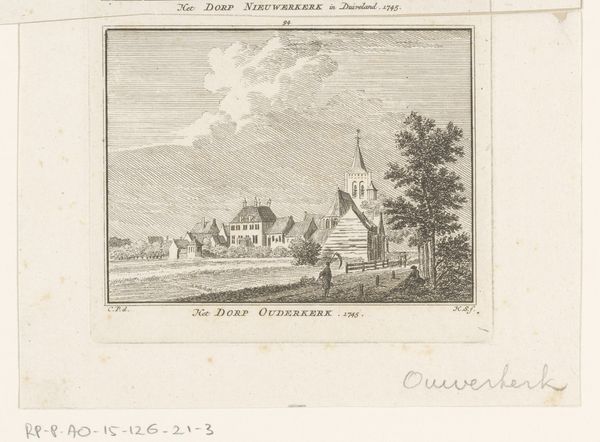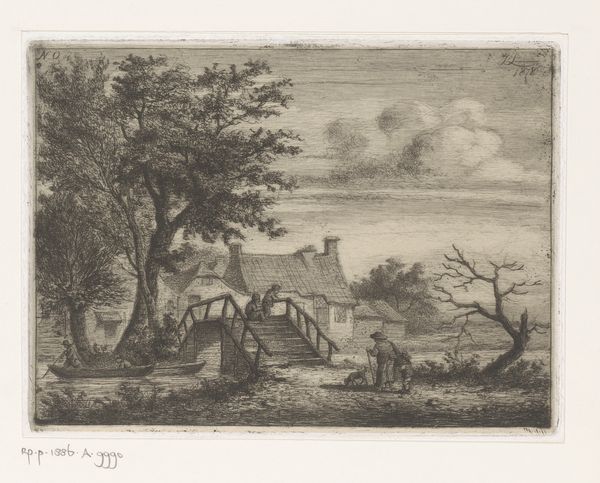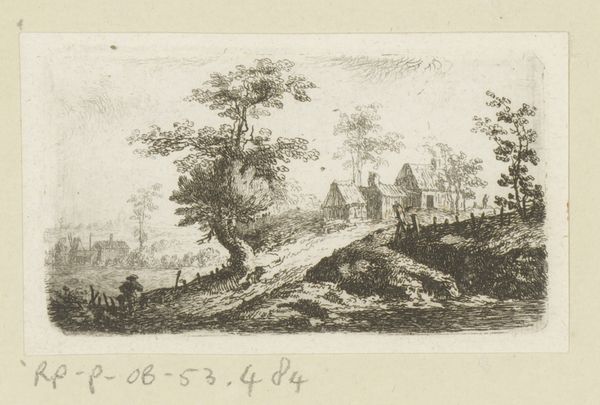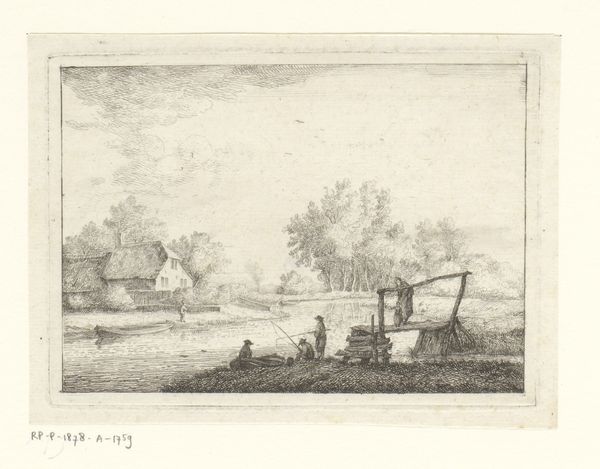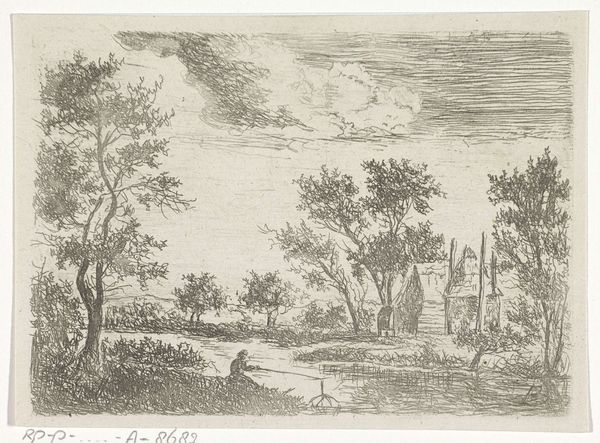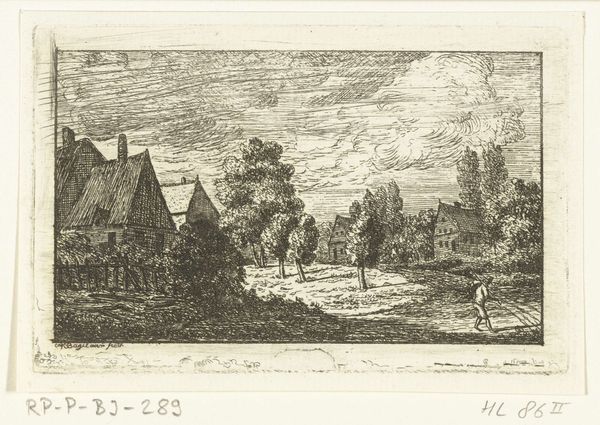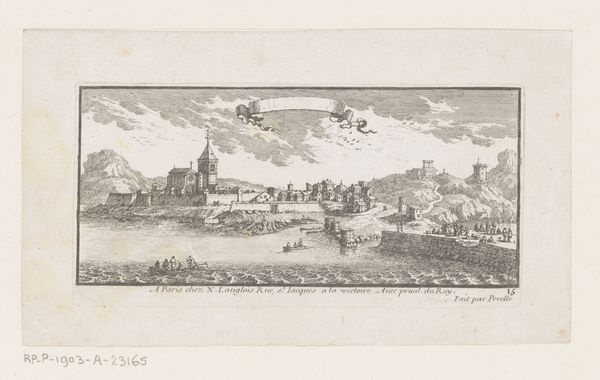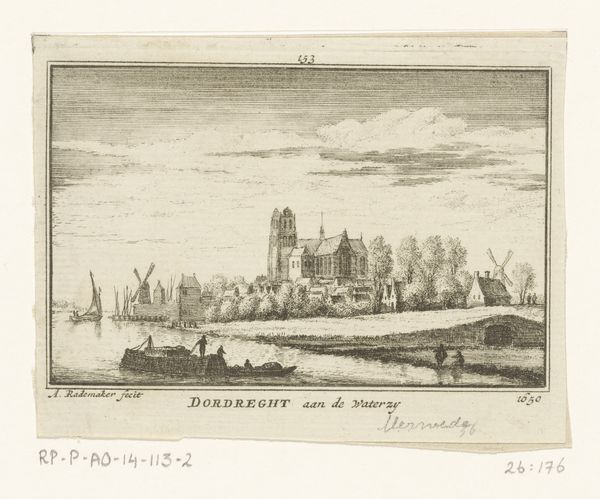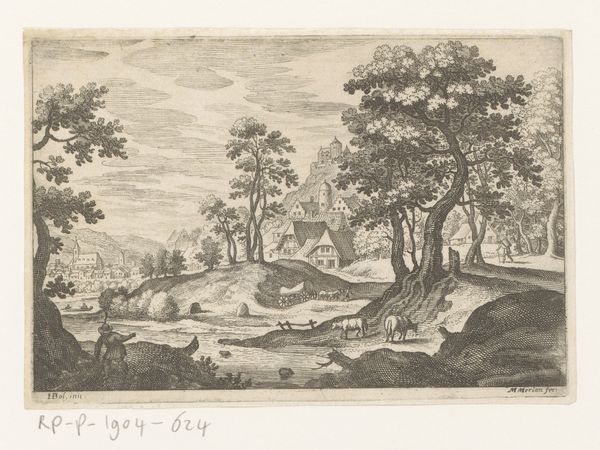
etching
#
dutch-golden-age
#
etching
#
landscape
#
etching
#
cityscape
Dimensions: height 82 mm, width 112 mm
Copyright: Rijks Museum: Open Domain
Editor: So, here we have Abraham Rademaker's "Gezicht op Capelle aan den IJssel, 1632", an etching created sometime between 1725 and 1803. It depicts a calm day in a small riverside community, almost idyllic. What stands out to you about it? Curator: Well, focusing on the material aspects, the printmaking process itself is key. Etching allowed for the mass production of these images. What were the economic conditions that allowed artists such as Rademaker to produce cityscapes that would be of value to ordinary people? Consider that this wasn’t a one-off painting intended for a wealthy patron. Editor: That's interesting. So, who would have been buying these etchings? Curator: Probably the emerging merchant class and middle class seeking affordable art to decorate their homes or document their surroundings. This print offered access to landscapes and scenes of everyday life at a lower price point. Consider what that availability did for art appreciation. How did this reproductive method blur lines between art and commodity? Editor: So it's not just a picture of a place; it's about accessibility and consumer culture. Does the choice of the subject matter – Capelle – also factor into this materialist reading? Curator: Absolutely. These prints were designed to portray the environment in which these new art buyers and patrons lived and made a living, providing familiar context they valued. To extend our line of thought, what resources and materials might be important for this particular etching besides the ink and paper? Editor: Perhaps the etcher’s tools themselves? And the infrastructure needed to distribute and sell the prints? It shifts the focus from the aesthetic value of the artwork to its material conditions. Curator: Precisely. It allows us to explore the world in which Rademaker was functioning, including the role of craftsmanship and industry in shaping artistic production and the consumer market of the time. It urges us to recognize value in production and understand art consumption beyond aesthetics. Editor: I'll never look at an etching the same way again.
Comments
No comments
Be the first to comment and join the conversation on the ultimate creative platform.
